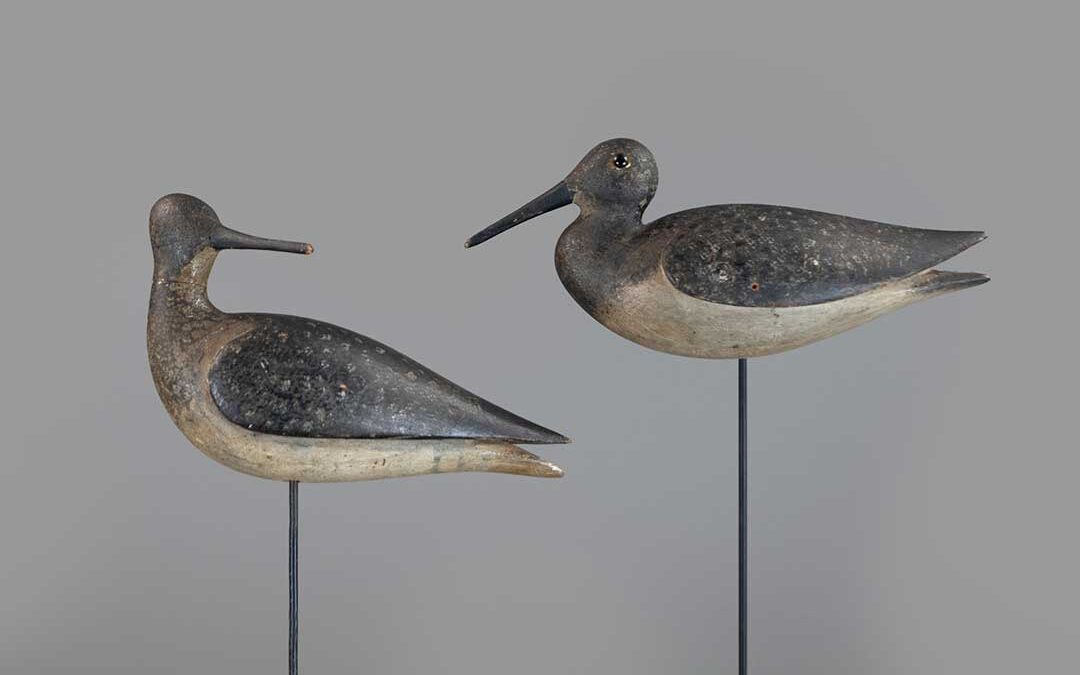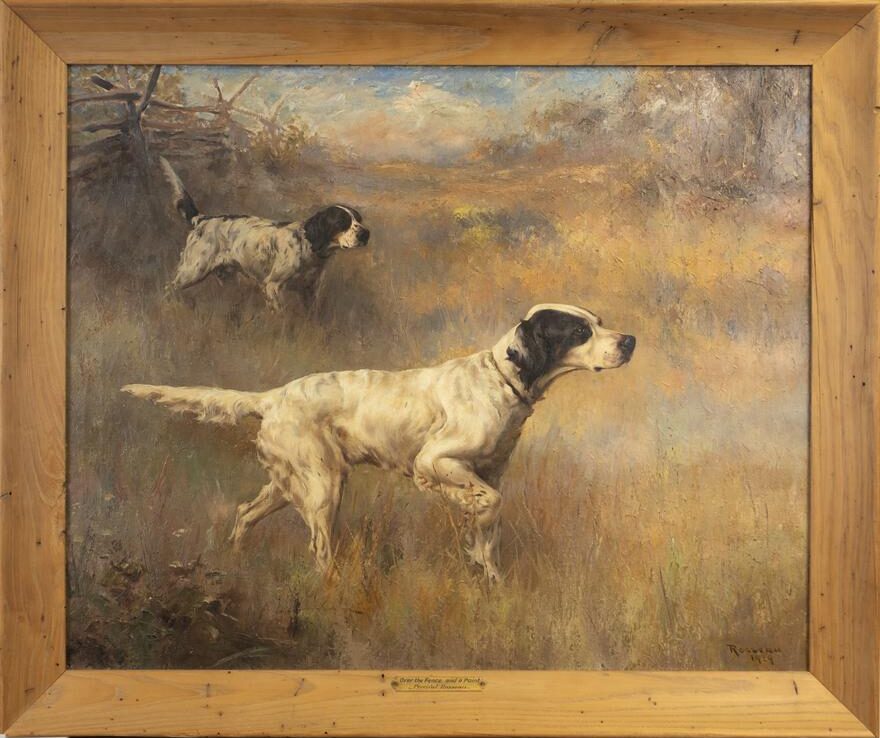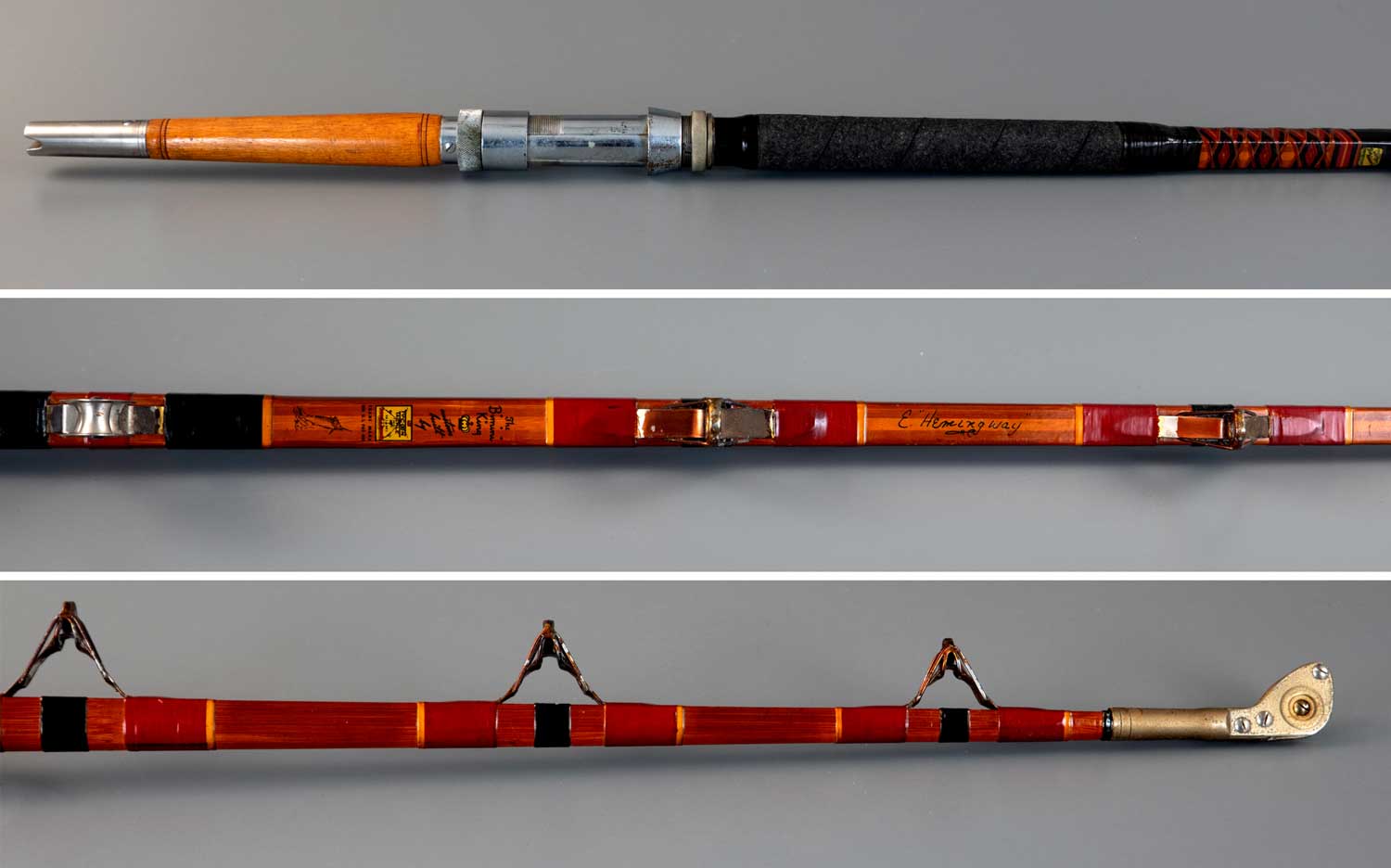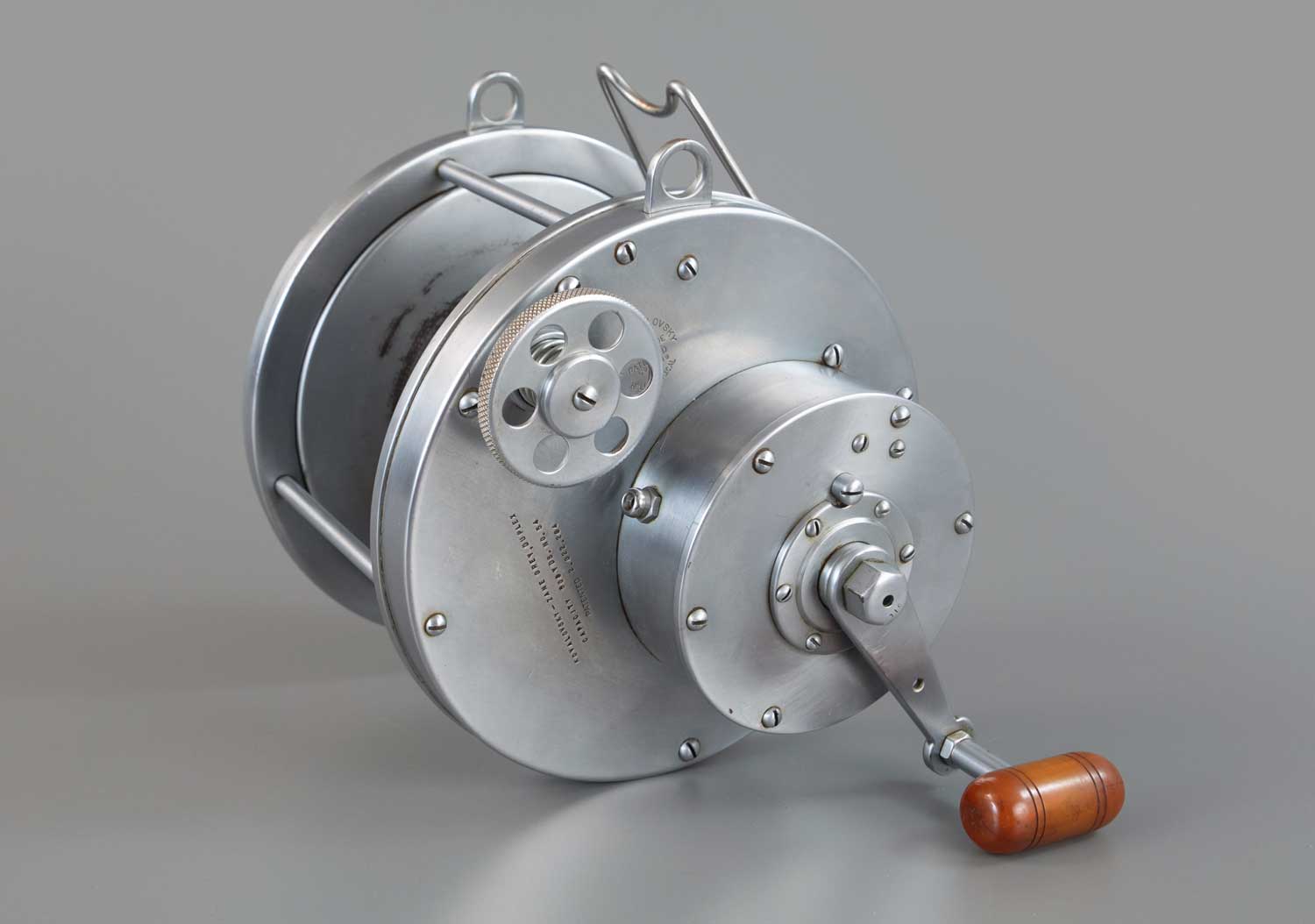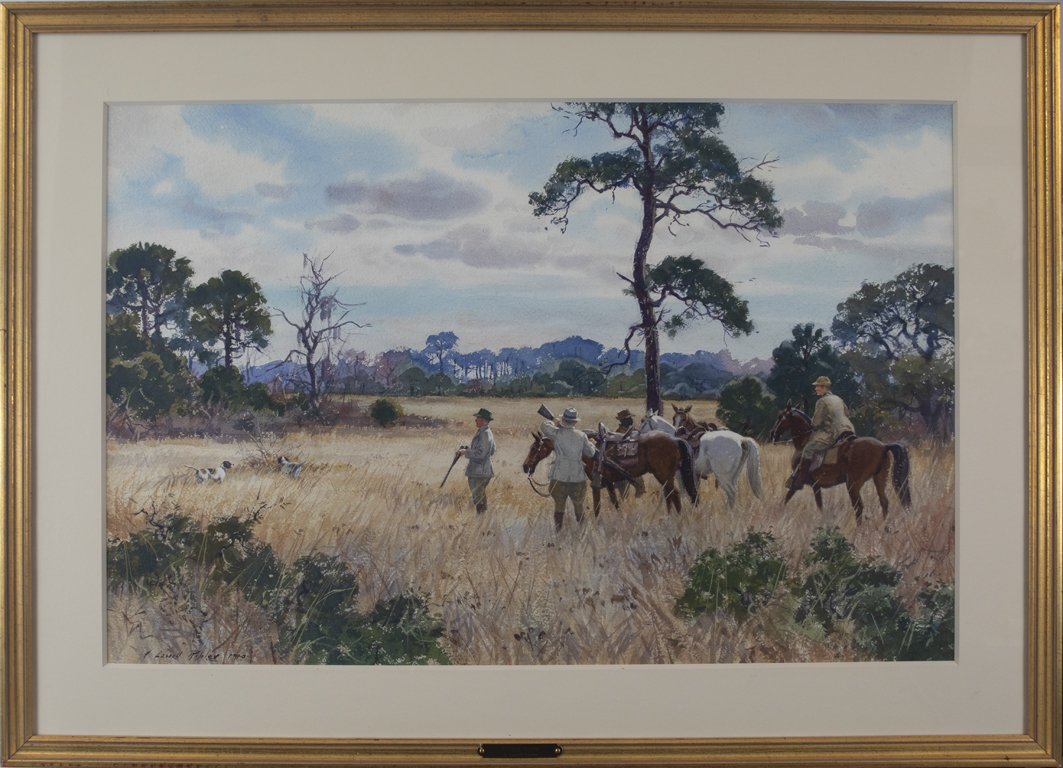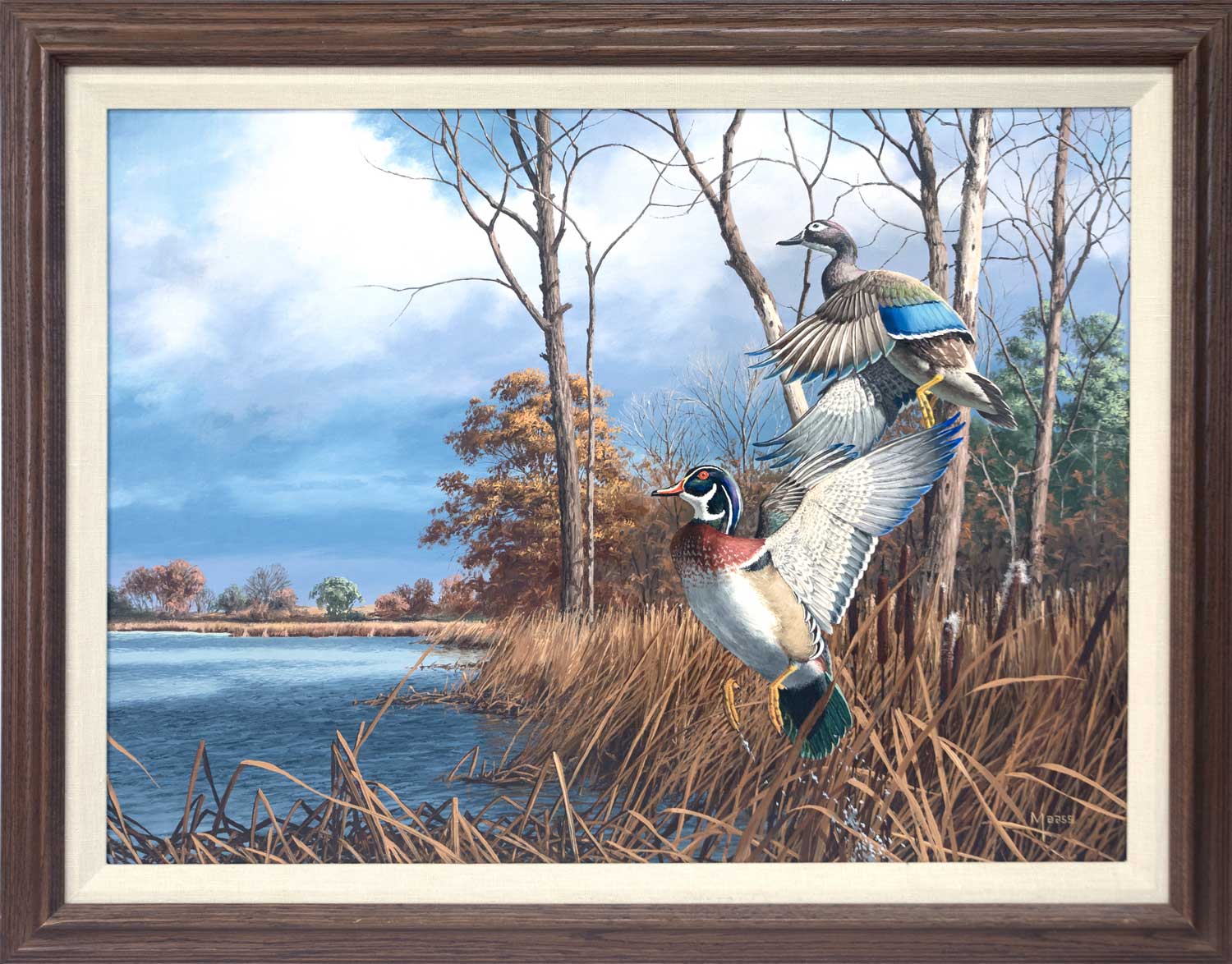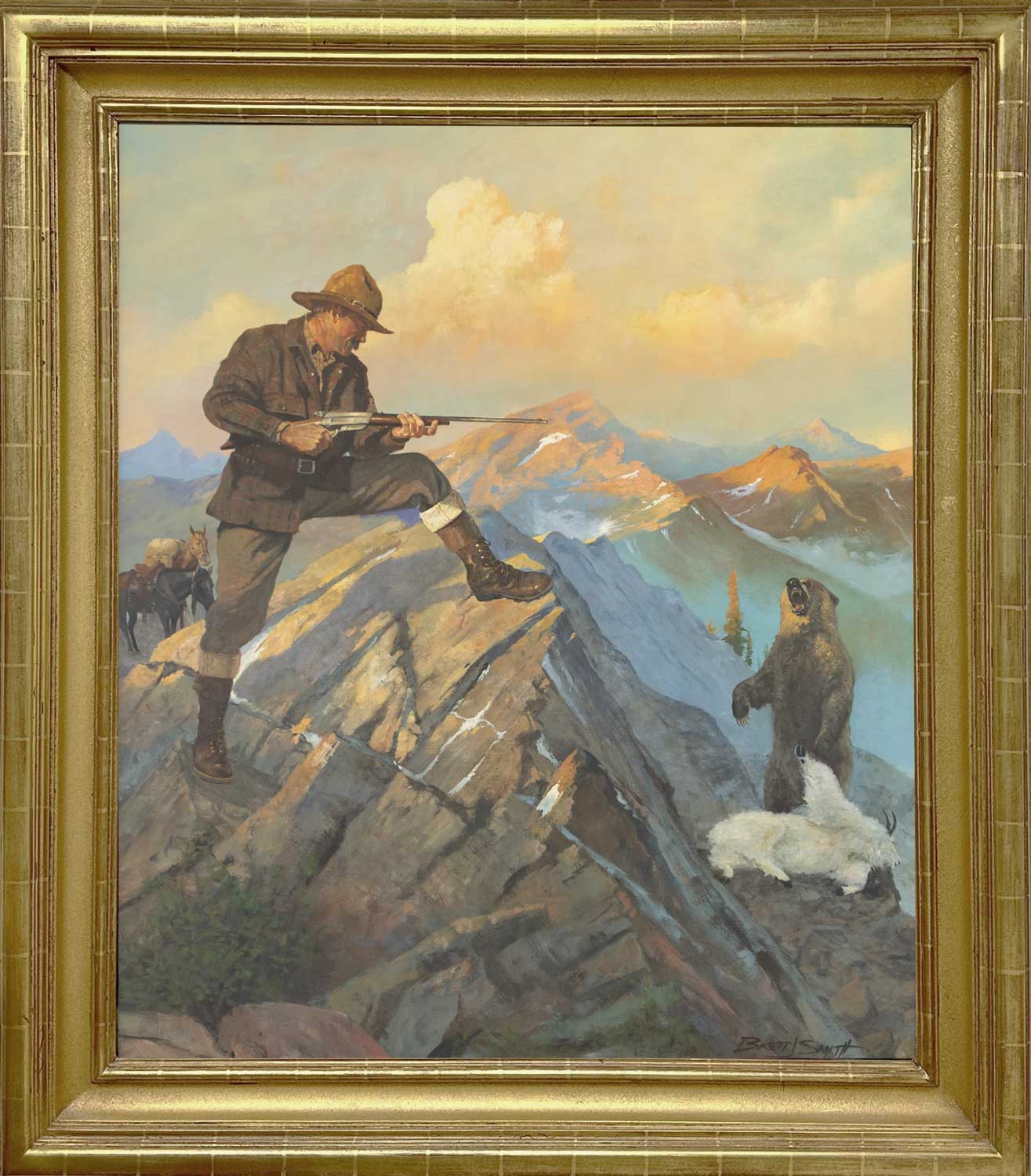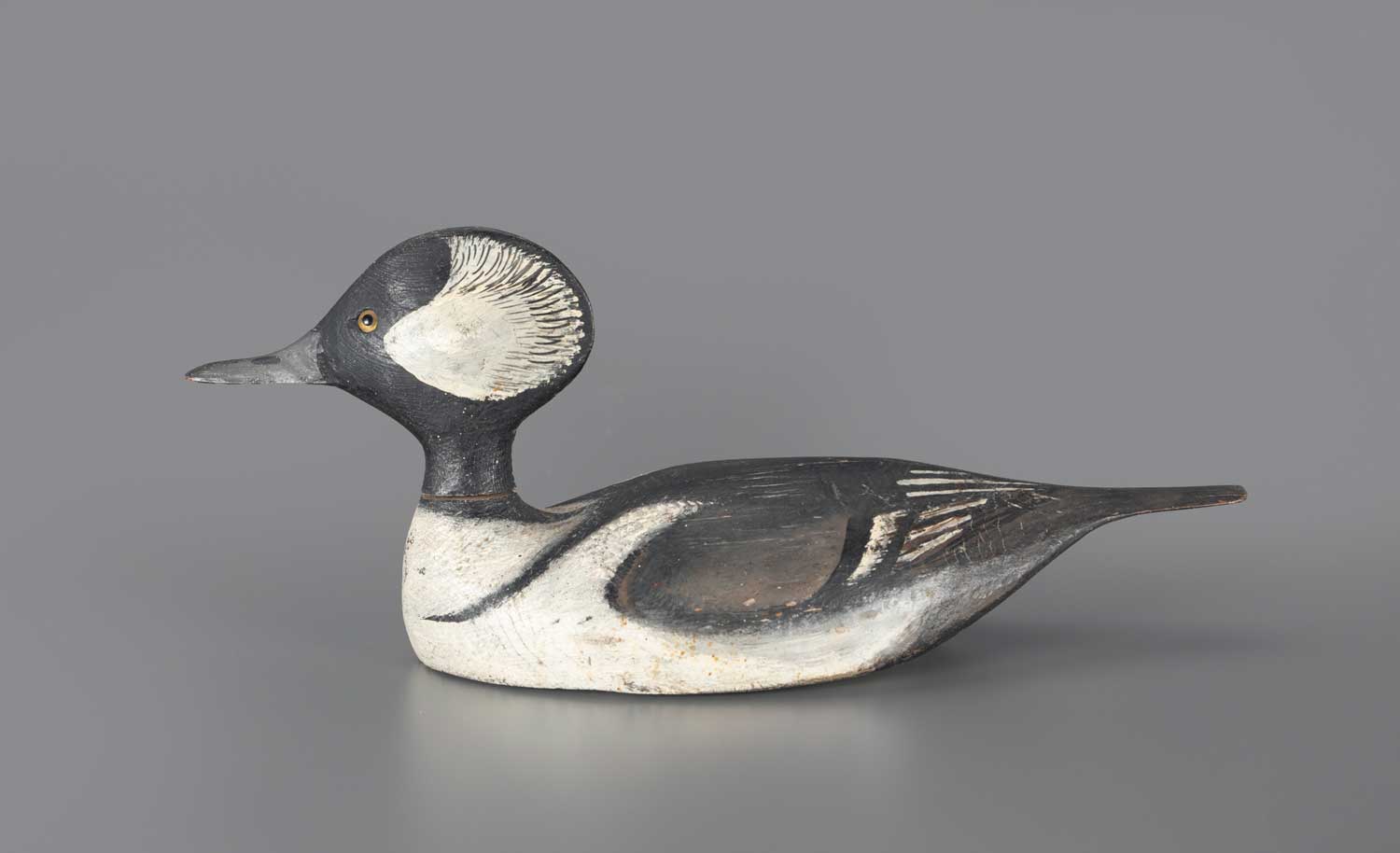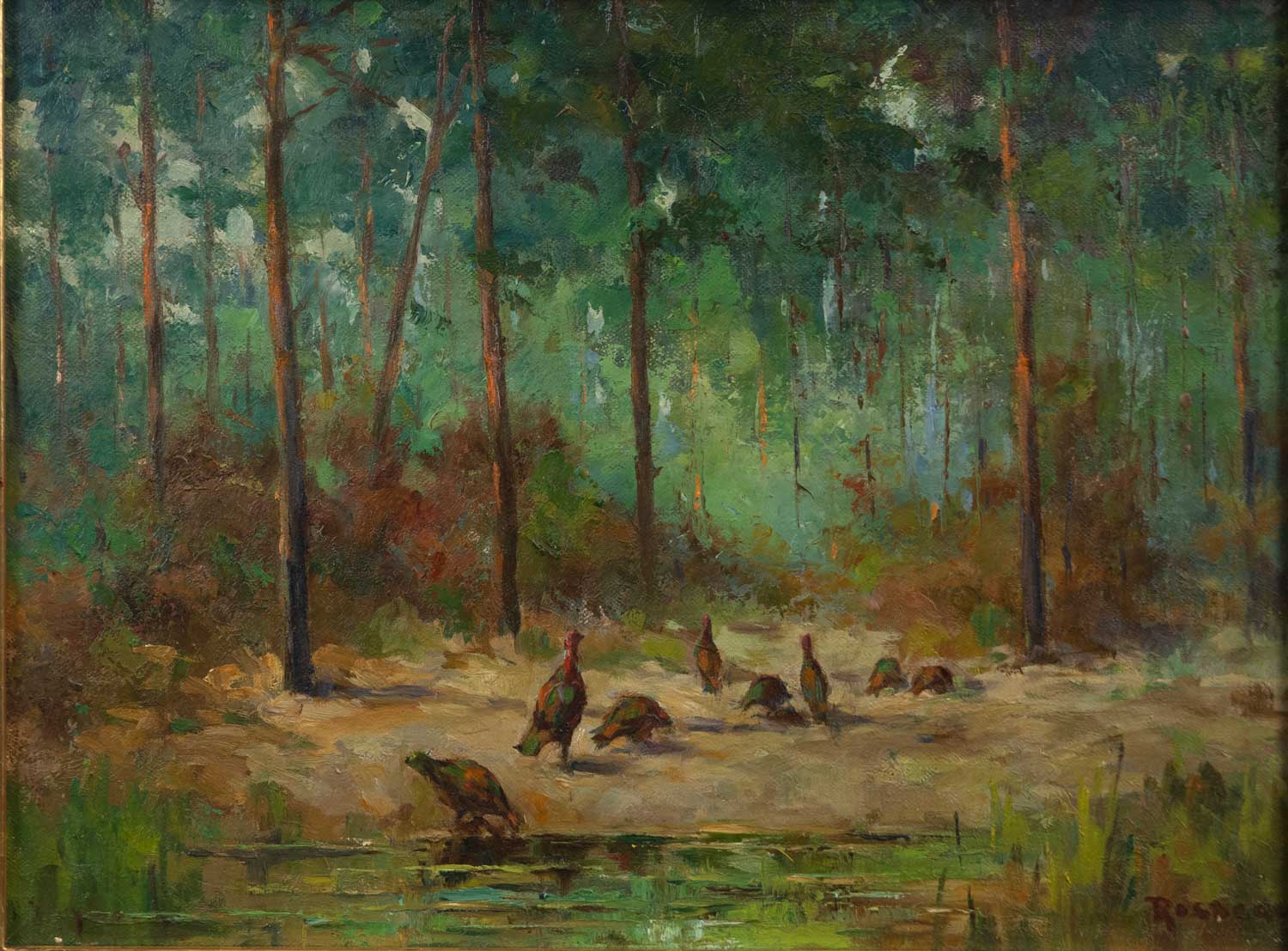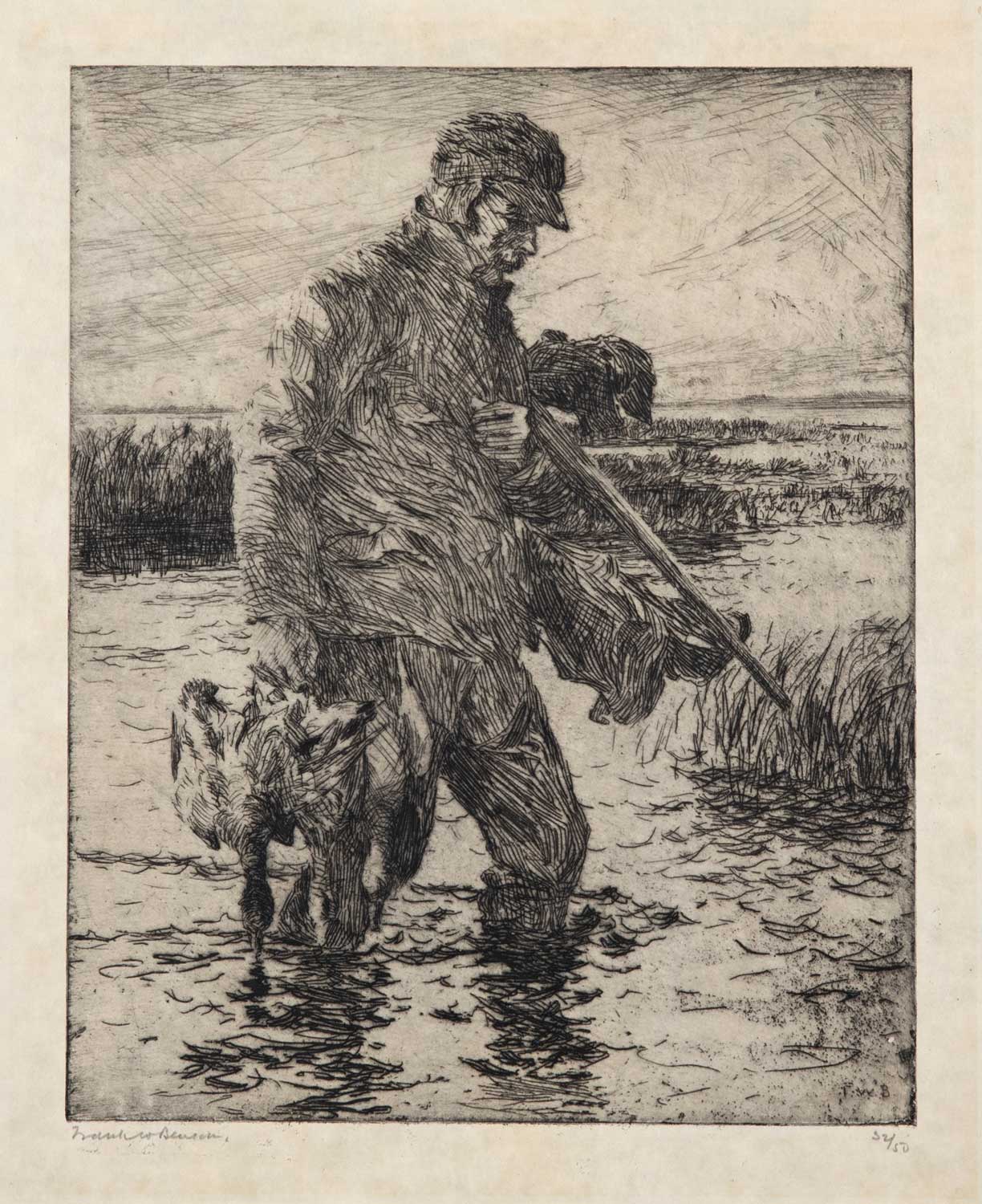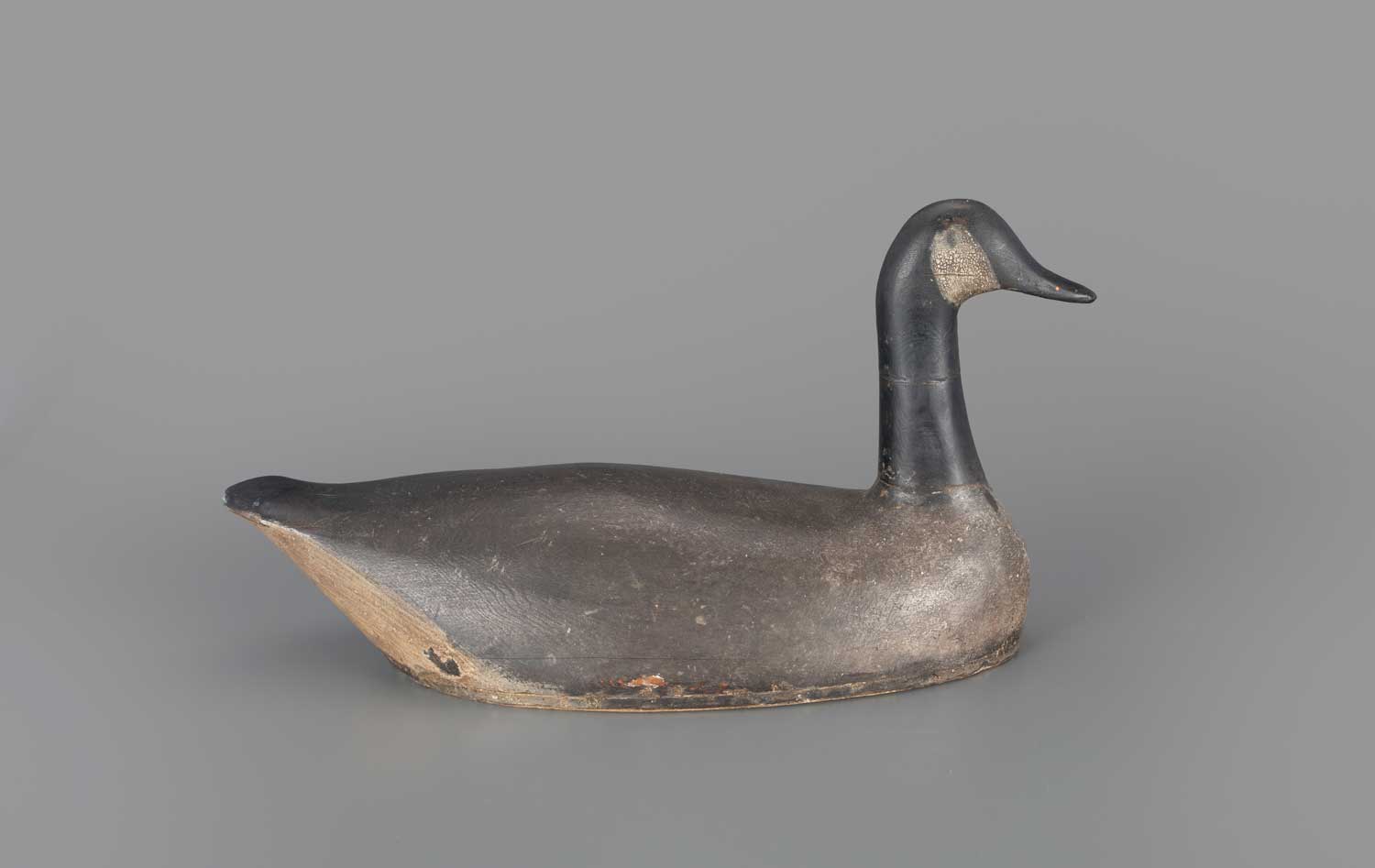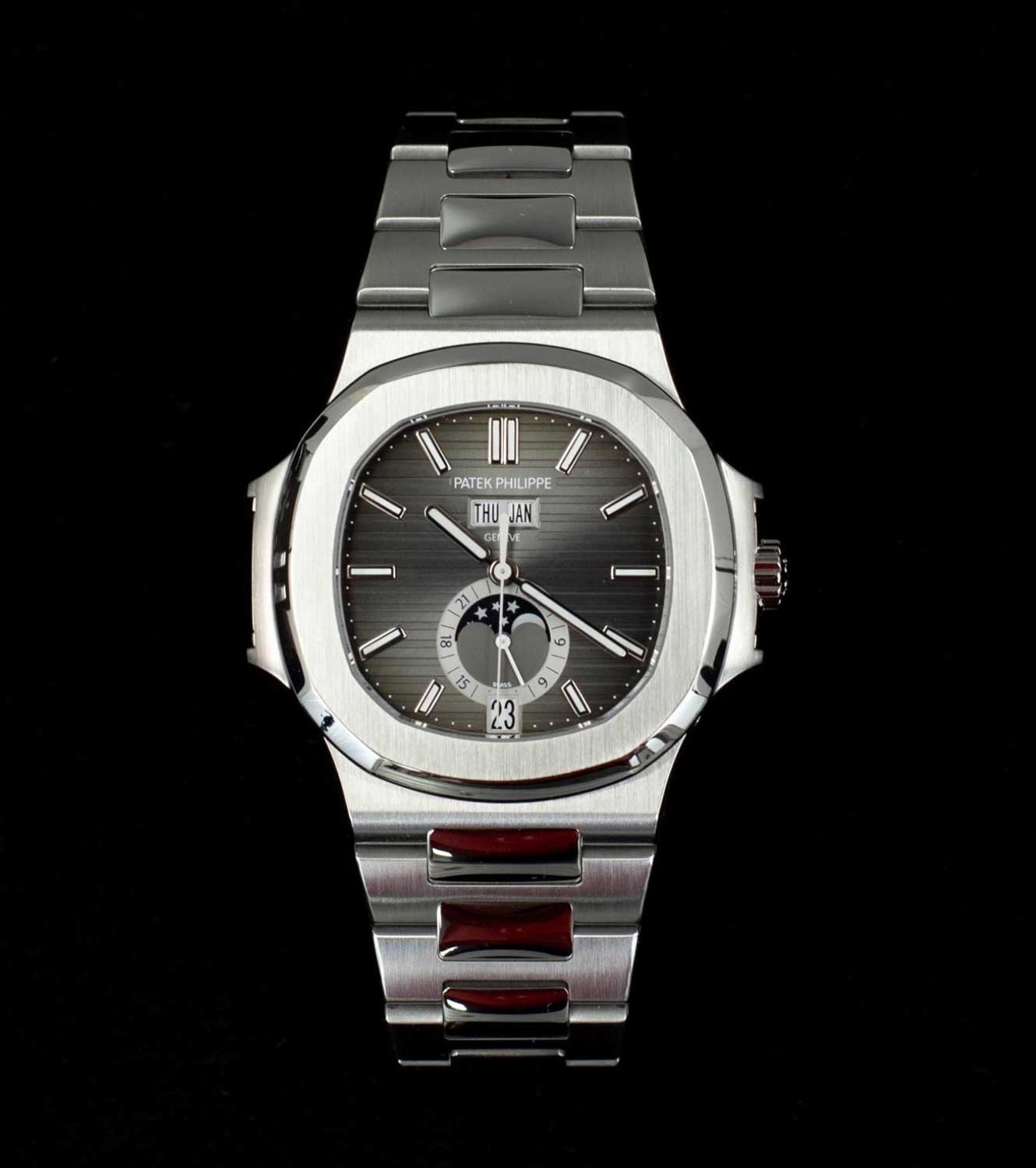Copley’s Winter Sale 2025, consisting of over 500 lots, will offer buyers the opportunity to acquire antique and contemporary decoys, decorative carvings, paintings, prints, folk art, Americana, bronze sculptures, and fishing collectables. Offerings from major estates and collections will headline Copley’s Winter Sale, including Zane Grey Fishing Collectables from The Ronald J. Gard Collection, Session II of The George Secor Decoy Collection with the proceeds from the hammer price again to be donated to Delta Waterfowl, The Trenton Spolar M.D. Collection of Waterfowl Decoys and Bird Carvings, The Alex Chester Collection of Works by Aiden Lassell Ripley, and a group of pinnacle shorebird decoys from a private Florida collection.
Percival Rosseau (1859-1937), Over the Fence, and a Point
Estimate: $30,000 – $50,000
Painted during Rosseau’s key period, this quintessential Carolina quail hunting scene depicts two English setters in the field. The main dog, in profile, stands on point, attentively indicating the direction of the quarry off to the right of the scene. The body of the dog is captured in luminous white with cascading fur, and its tail extends horizontally. Its bracemate, nearer to the fence, honors the point by coming to a freeze as well. The soft landscape surrounding the dogs, a hallmark of Rosseau’s mature style, complements the precision of the working canines.
Ernest Hemingway’s Tycoon Tackle “Bimini King” Rod
Estimate: $10,000 – $20,000
This exceedingly rare, and likely unique, Tycoon Tackle “Bimini King” was specially made for Ernest Hemingway. This big game rod is one of the most important Hemingway items to ever come to market. The rod is monogrammed “E. Hemingway” in India ink under the original varnish, which was only done for special clients or on custom orders. Hemingway was a friend and customer of Frank O’Brien, the founder of Tycoon Tackle, and the author recommended “Bimini King” rods for catching marlin “from 250 to over 1000 pounds.” Hemingway favored these rods, writing in “Holiday” magazine’s July 1949 publication that “The best [rods] I have found, outside of the old Hardy Hickory-Palakona bamboo #5, are those made by Frank O’Brien of Tycoon Tackle, Inc. His rods are incomparably the best I know made today.” He was photographed many times using these rods, often with a Hardy Zane Grey reel, as he fought big billfish on “Pilar.”
Kovalovsky “Zane Grey, Duplex” by Arthur Kovalovsky (1881-1958)
Estimate: $20,000 – $40,000
As an avid big game fisherman, Kovalovsky wasn’t satisfied with the quality of the reels available and knew he could do better. After moving to California, Kovalovsky built his first fishing reel in 1928 in his automobile repair shop. By 1931, he had closed the repair shop and was making reels full-time in Hollywood. Kovalovksy gained a reputation for making the finest big game reels available and was continually improving his designs. His reels were the top choice for affluent fishermen, such as Zane Grey, one of Kovalovsky’s best customers. Grey even endorsed a line of reels that were made to his specifications.
This exceedingly rare Kovalovsky “Zane Grey, Duplex” big game reel is one of only two “Duplex” models known to exist. Lang’s Auction Company cataloged that “this huge reel was made for and used by the famous writer and sportsman Zane Grey.” It is thought that Kovalovsky made this reel to Grey’s specifications as an improved version of the previous “Duplex” model.
The McCleery Dexter-Gardner Dowitcher Pair by Dexter and Gardner
Estimate: $200,000 – $300,000
Measuring almost twelve inches long, these boldly carved shorebird decoys exhibit hollow, laminated, three-piece, pegged-body construction. One bird has a turned head, while the other displays a tucked head. Both have carved raised wings and a superb dry original surface. The turned-head carving bears the James M. McCleery Collection stamp on the underside.
This peerless pair rank not only among the finest shorebird decoys ever to come on the market, but also, like the Nina Fletcher Little duo of Bunn curlews, Crowell dust-jacket plovers, and Fred Nichols animated plover and yellowlegs, these iconic bird decoys represent the very finest of American folk art.
Aiden Lassell Ripley (1896-1969), Getting Ready
Estimate: $40,000 – $60,000
An important Ripley work passed down through the Webb family of Shelburne Museum fame, “Getting Ready” has all the characteristics of a classic Southern quail hunting scene. The viewer is drawn in as the two pointers are locked onto a covey of quail. A handler steadies the horses as the hunters dismount, unsheathe their side by sides, and load up in preparation of the flush.
Aiden Lassell Ripley (1896-1969), Grouse on an Apple Tree
Estimate: $15,000 – $25,000
This fine watercolor, depicting the artist’s favorite bird, shows Ripley as the master of upland bird portraits. Sporting art collector Guido R. Perera, a friend and patron of the artist, marveled at Ripley’s knowledge of his favorite game bird, “Aiden may have been a grouse in one incarnation.”
David A. Maass (b. 1929), Flash of Color – Wood Ducks
Estimate: $10,000 – $20,000
“My intent was to capture the exact moment that this pair of wood ducks springs from their hidden sanctuary among the cattails. The brilliant plumage of the drake added a ‘flash of color’ to the composition.” – David A. Maass discussing this exact painting
Brett James Smith (b. 1958), Lost Then Found
Estimate: $8,000 – $12,000
Brett J. Smith was born on March 19, 1958, in New Orleans, Louisiana. His early introduction to sporting art came from his father who worked professionally as an illustrator and moonlighted as a fine artist, contributing paintings for covers of the early outdoor and Western magazines. Sportsmen nationwide collect Smith’s work because it is not only visually exciting, but also authentic and brings to bear his intimate knowledge of his sporting experience. Smith’s work has been featured in such publications as “Gray’s Sporting Journal,” “Ducks Unlimited Magazine,” “Sporting Classics,” “Shooting Sportsman,” and “Double Gun Journal.” He has also been recognized for his work with such organizations as Gulf Coast Conservation Association, Atlantic Salmon Federation, Ruffed Grouse Society, Ducks Unlimited, and many others.
This dynamic Western scene features a hunter in unexpected competition with a grizzly bear over his mountain goat quarry.
The Tyler Hooded Merganser by Lloyd Tyler (1898-1970)
Estimate: $100,000 – $150,000
In the mid-1980s Henry Stansbury was the leading collector of Lloyd Tyler’s works. It was at this time that this singular hooded merganser made its first impression on Stansbury and the decoy and folk art collecting communities. Stansbury recounts, “In the fall of 1986, Richard Bourne had a superb Tyler hooded merganser for sale in his auction. It was the first Tyler decoy I had seen that threatened to break the ‘world record’ price I paid for my preening pintail …” After losing out to multiple competing bidders, he acknowledges, “My Tylers would never be treated the same again.” Indeed, less than a decade later Stansbury published his first book, “Lloyd J. Tyler, Folk Artist, Decoy Maker,” which features and discusses this carving. History repeated itself on a larger scale in 2007 when the decoy next surfaced, setting a record at auction not only for Tyler, but for any Maryland decoy.
Collectors have long recognized that this decoy captures the charming nature of the species with a high and slightly turned head topped by a thin crest. The body’s form and paint show seemingly effortless sweeping lines with detailed plumage and a long thin tail. This decoy represents one of the great examples of Southern Americana and folk art. The underside retains its Bourne auction tag, a Huster collection ink stamp, and the imprint of the Hunter collection tag. Excellent original paint with light gunning wear.
Early Raised-Wing Golden Plover by A. Elmer Crowell (1862-1952)
Estimate: $30,000 – $50,000
This early Crowell model shows “dust-jacket” style wing carving and elaborate paint. The efforts required to make this type of decoy were time consuming and Crowell had pretty much abandoned the model altogether by 1920. This rare example stands out as one of the only golden plover decoys with this wing treatment known to exist. The underside retains the “NELSON” Collection stamp for Grant Nelson who assembled one of the finest shorebird decoy collections ever assembled. Original paint with even gunning wear, very minor one-third-inch restoration to wing tip, slightly lifted grain line by stick hole, and very minor spot of touch-up to original bill.
Percival Rosseau (1859-1937), Carolina Sandhills
Estimate: $8,000 – $12,000
Titled “Carolina Sandhills” by the artist, this atmospheric work depicts eight wild turkeys in the longleaf pine forest ecosystem distinctive to areas of North and South Carolina. Throughout the 1920s and 1930s, when bird hunting on the site was in its heyday, Rosseau painted from a cottage at the fabled property of Overhills, a private hunt and country club with stables and kennels in Cumberland County, North Carolina. In time Overhills became a private estate for the Rockefeller family before being acquired by the U.S. Army. The land is now part of Fort Bragg.
Frank W. Benson (1862-1951), The Gunner
Estimate: $8,000 – $12,000
Along with “Old Tom,” “Marsh Gunner,” and “Winter Wildfowling,” “The Gunner” anchors Benson’s “Big Four” waterfowling etchings. While the other three were printed in editions of 150, Benson only plated fifty of his iconic “Gunner.” Of these, very few have appeared on the open market.
Rare and Early Canada Goose by Daniel B. Jones (1834-1903)
Estimate: $7,000 – $10,000
A rare hollow goose from Price Edward County. It has a high thin neck held from the inside by an L-bolt. The underside is marked with “LXXII.” Original paint with moderate gunning wear. Restoration and touch-up includes bill tip, loss to tip of tail, cracked neck, and body seam.
Patek Philippe Nautilus 5726/1A-010 Wristwatch
Estimate: $65,000 – $95,000
The ref. 5726/1A was first released in 2012 as an extension of the Nautilus Collection and was available with either a black-dial option or a white-dial option fitted on a stainless steel bracelet. These offerings have since been taken out of production, with only a blue-dial option being available for retail sale. This makes the present example highly desirable to collectors.
This fresh-to-market Patek Philippe Nautilus ref. 5726/1A takes Genta’s original design and elevates it, adding annual calendar complications to the watch while maintaining the sleekness that the model is known for. Powered by Patek Philippe’s innovative caliber 324 S QA LU 24H, this watch tracks and displays the month, day of the week, date, moon phase, and a 24-hour dial. This movement consists of 347 individual parts and automatically considers months with 30 and 31 days, meaning that if it is continually run, it only has to be adjusted once a year. The watch comes on the Nautilus’ stainless steel integrated bracelet with a double folding clasp. The Patek Philippe logo can be found on the watch’s crown, clasp, and 21-karat gold central rotor. With its striking black dial and horizontal embossed lines, this Nautilus exhibits the pinnacle of watchmaking design and the precision that Patek Philippe is known for.

